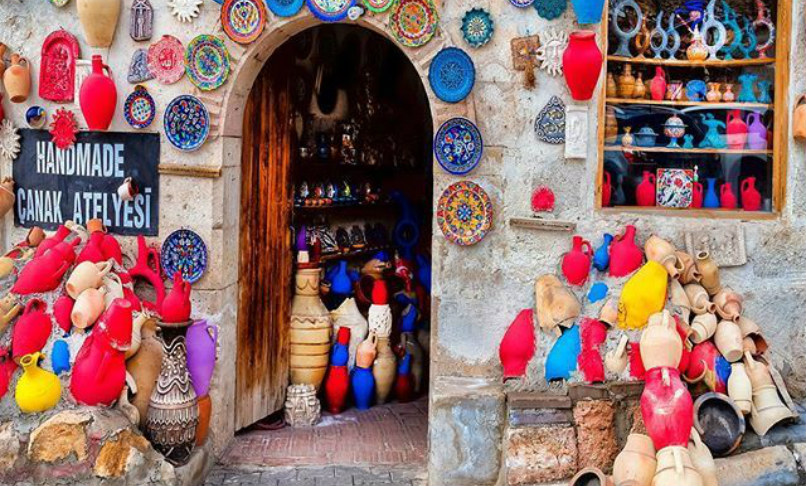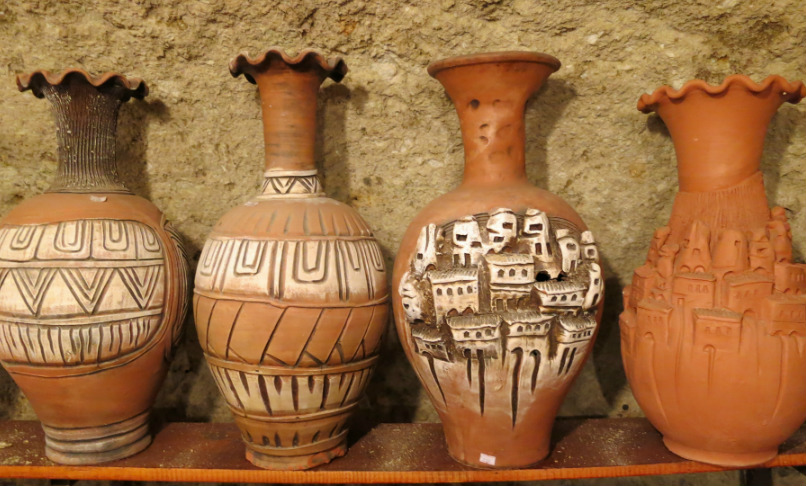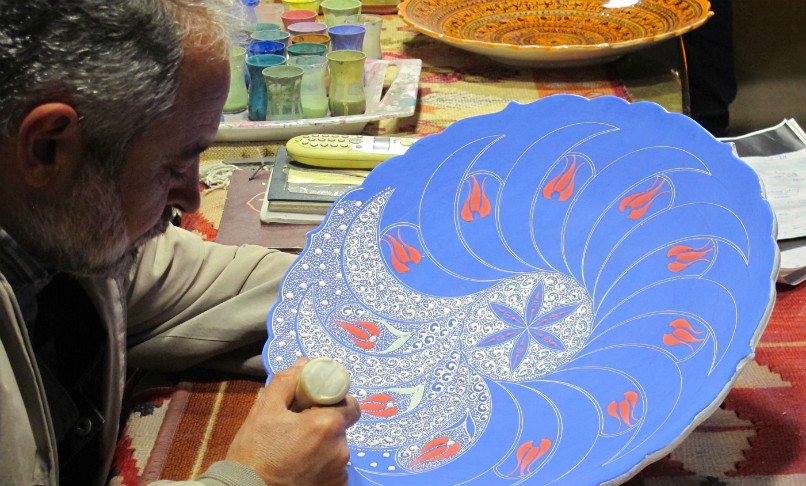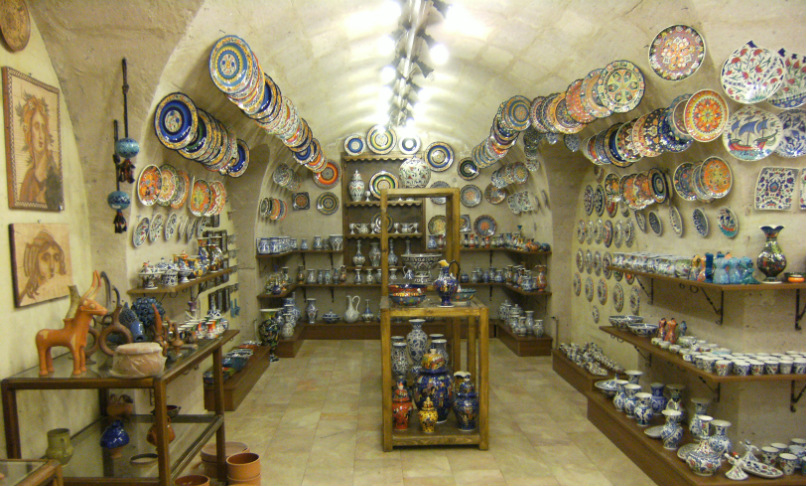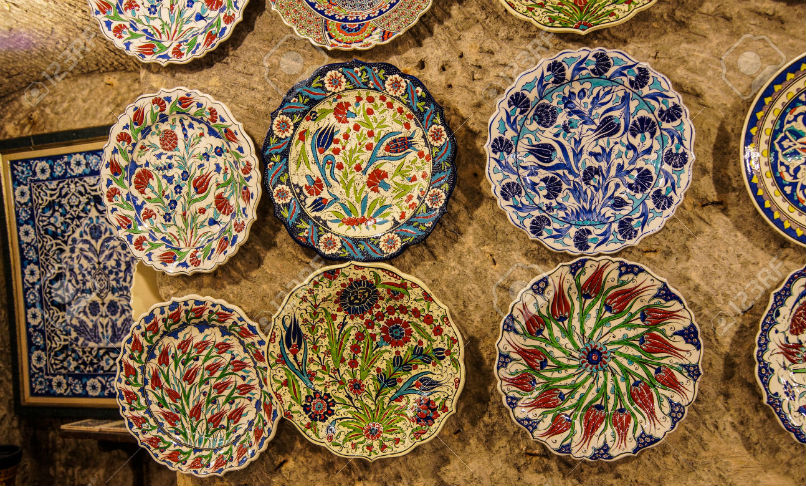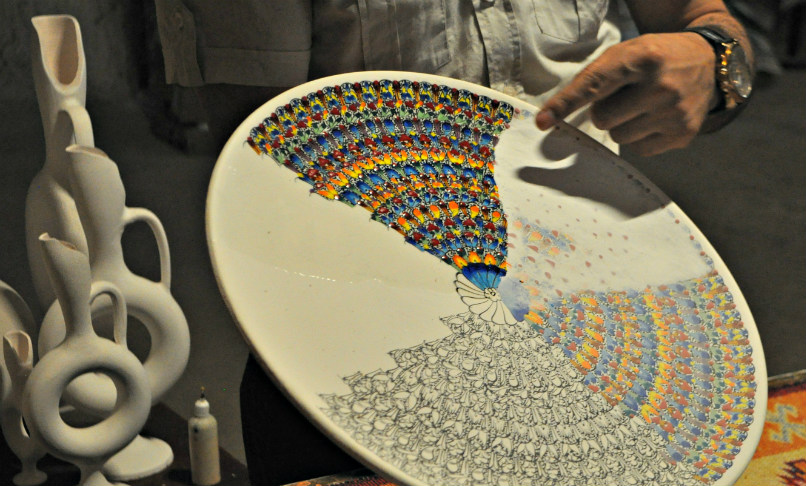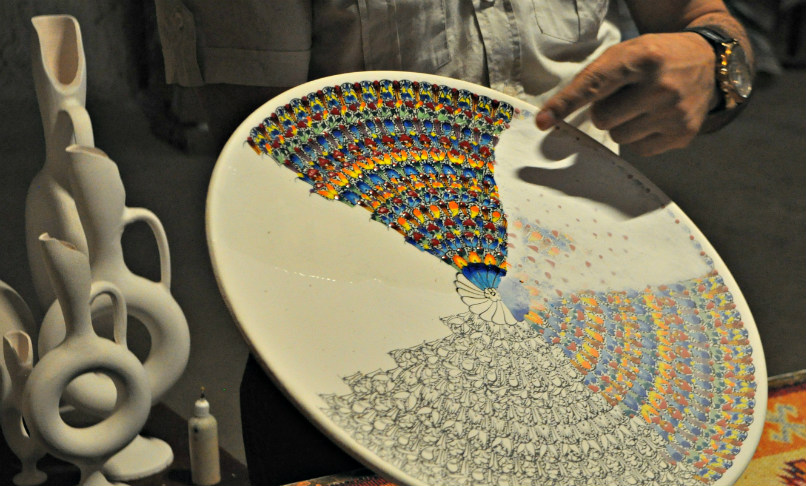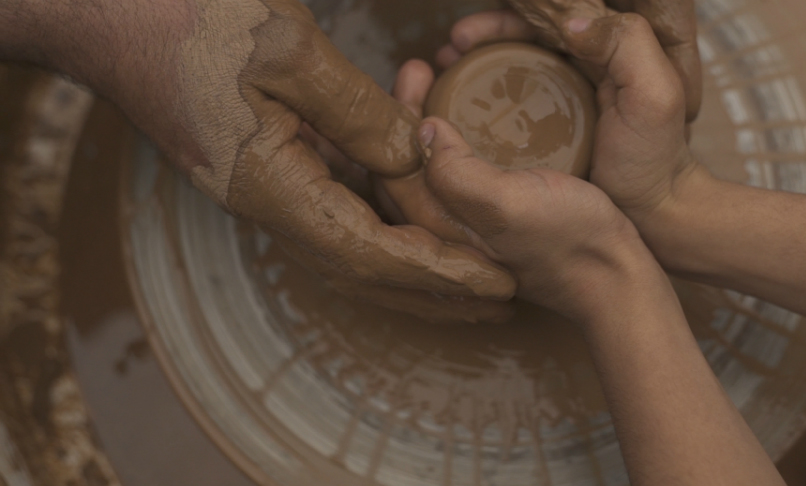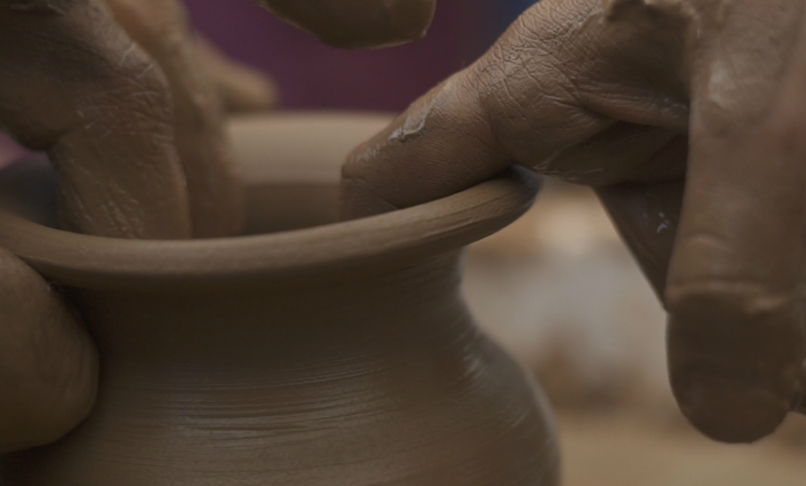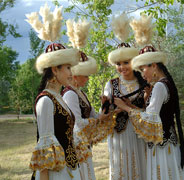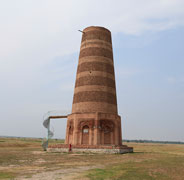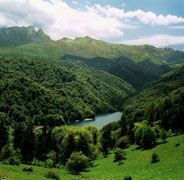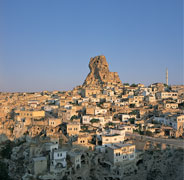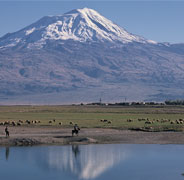Pottery Making in Cappadocia
The Kizilirmak (red) river, also known as the Halls river, is the longest river in Turkey, running through Cappadocia and supplying the red clay used to make pottery.
Pottery has been produced in the Cappadocia area for centuries and some of the techniques still used today date back to the Hittite era of around 1600BC.
To make the clay, red earth is mixed with water and left to stand in a mud trough until it reaches the right consistency. Depending on the type of bed it comes from, the mud is either loose, gritty and soft or oily and hard or has a clay-like consistency.

